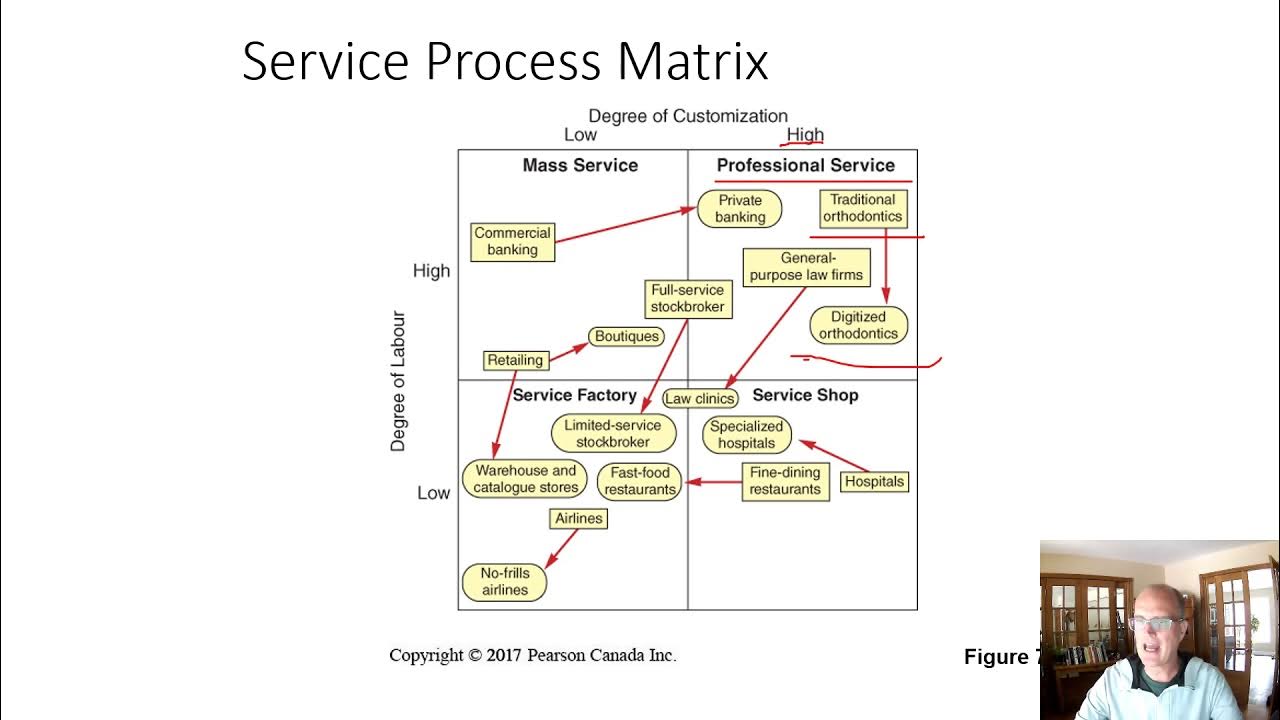Lecture 38 - Improving Service Quality and Productivity - Part 3
Summary
TLDRThis video focuses on improving service quality and productivity, discussing key concepts like defining and measuring service productivity, the difference between productivity, efficiency, and effectiveness, and methods to enhance customer service processes. It covers tools like Total Quality Management (TQM), ISO 9000, Six Sigma, and the Malcolm-Baldrige and EFQM approaches. Additionally, it outlines both generic and customer-driven strategies to boost productivity. The video emphasizes balancing efficiency with effectiveness to meet organizational goals while maintaining customer satisfaction.
Takeaways
- 📊 Service productivity measures output relative to input, and improving it requires reducing resources or increasing output.
- 🛠️ Productivity in services can be harder to measure compared to manufacturing due to the intangible nature of service outputs.
- 🔄 Efficiency refers to how quickly tasks are completed relative to a standard, while effectiveness measures how well an organization achieves desired outcomes.
- 💬 Classical productivity measures often overlook effectiveness, which includes customer satisfaction and desired outcomes.
- 👥 Balancing efficiency and effectiveness is critical, as focusing too much on efficiency might sacrifice customer satisfaction.
- 🏗️ Generic strategies to improve productivity include cost control, reducing waste, employee training, and using automation.
- 🤝 Customer-driven productivity improvements include shifting demand to off-peak times, using intermediaries, and promoting self-service options.
- 🚀 A nine-step framework helps firms improve service quality and productivity, from identifying priority processes to continuous improvement.
- 📚 Total Quality Management (TQM), ISO 9000, and Six Sigma are widely used methodologies to improve service quality and productivity.
- 🏅 Malcolm-Baldrige and EFQM models assess organizations based on leadership, process management, customer focus, and business results.
Q & A
What is service productivity in the context of this module?
-Service productivity measures the amount of output produced relative to the input used. It is focused on improving the ratio by reducing resources or increasing output from the same level of inputs.
What is the difference between productivity, efficiency, and effectiveness?
-Productivity is the output one gets from a certain amount of input. Efficiency is about doing things right and is time-based, often comparing performance to a standard. Effectiveness is about doing the right things and achieving organizational goals, like customer satisfaction.
Why is measuring productivity in services often difficult?
-Measuring productivity in services is challenging because outputs are often intangible and difficult to define, especially in people-centered industries like healthcare, where tasks vary greatly in complexity and outcomes.
How can labor and asset productivity be measured in service industries?
-Labor productivity can be measured by metrics like revenue per employee or value-added per employee. Asset productivity is commonly measured by the return on assets.
Why is effectiveness often neglected when focusing on productivity and efficiency?
-Classical productivity and efficiency measurement techniques focus on outputs and benchmarking, often neglecting effectiveness, which is about achieving desired outcomes such as customer satisfaction. This leads to scenarios where services are efficient but not effective in delivering customer value.
What are some generic strategies to improve service productivity?
-Generic strategies include careful cost control, reducing waste, training employees, broadening their task variety, improving capacity utilization, leveraging technology, and outsourcing non-core activities.
What are customer-driven strategies for improving productivity?
-Customer-driven strategies involve changing the timing of customer demand, encouraging the use of third parties like intermediaries, and shifting tasks to self-service or low-cost delivery channels, such as online platforms.
How does the DMAIC model help improve processes?
-The DMAIC model stands for Define, Measure, Analyze, Improve, and Control. It guides organizations in identifying issues, measuring current performance, analyzing root causes, implementing improvements, and maintaining control over the redesigned process.
What is the role of TQM (Total Quality Management) in improving service productivity?
-TQM focuses on continuous improvement through customer-centric approaches and systematic process enhancement. It aims to increase service excellence and productivity while creating sustained value through innovation.
What are the key elements of the Malcolm-Baldrige approach?
-The Malcolm-Baldrige approach assesses firms based on seven elements: leadership commitment, planning for improvements, information and analysis, human resource management, process management, customer focus, and business results.
Outlines

This section is available to paid users only. Please upgrade to access this part.
Upgrade NowMindmap

This section is available to paid users only. Please upgrade to access this part.
Upgrade NowKeywords

This section is available to paid users only. Please upgrade to access this part.
Upgrade NowHighlights

This section is available to paid users only. Please upgrade to access this part.
Upgrade NowTranscripts

This section is available to paid users only. Please upgrade to access this part.
Upgrade Now5.0 / 5 (0 votes)





